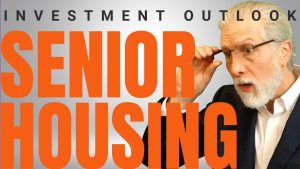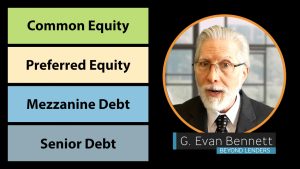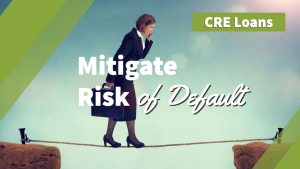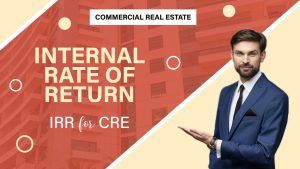Takeaways
- The end of rate hikes is starting to bring stability to the CRE market.
- Higher-for-longer interest rates will catalyze refinancing shortfalls.
- Investors must fully embrace and quickly respond to the market reset.
The commercial real estate market in the United States is going to experience a refinancing shortfall of between approximately $210 billion and $440 billion dollars between now and the end of 2025. That’s according to research that was recently published by JLL and it very much aligns with what we’ve been preaching for the past year. This shortfall is going to open up tremendous opportunities across the capital stack for well capitalized investors that can react quickly when the time comes. Here’s the thing. The time is now, this year.
Transactional Deep Freeze Starting to Thaw
Regardless of when the Fed starts cutting rates, they have at least signaled an end to rate hikes. That alone is starting to bring a certain measure of stability to the market. The prolonged lack of transactions, a figurative deep freeze that started in the second half of 2022 and continued throughout the entirety of 2023, is only just now starting to thaw. We’re at a turning point. You might even say we’ve hit bottom. Now that the market is feeling confident that interest rates aren’t going any higher, we can finally start settling the issue of market values.
Rate Hikes Deterred Buyers, Sellers, and Banks
Uncertainty around interest rate hikes was the root cause of the deep freeze. The bid-ask spread between buyers and sellers these past 18 or so months has been as wide as the Grand Canyon. In a rising interest rate environment, buyers hesitate to buy, all other things being equal, because of the higher cost of debt and the corresponding downward pressure on market values, pressure that would be ongoing right from acquisition. Sellers on the other hand, don’t want to sell because of that same downward pressure. It’s not easy to accept that a property had a much higher market value just a couple of years ago than it does today. Unless circumstances are forcing them to sell, they’re not likely to do so.
That’s where banks come in. They’ve been compounding the deep freeze on both sides of the hypothetical transaction. Interest rate hikes left them just as much in the dark as everyone else when it comes to market values. It’s very difficult to underwrite a loan for a buyer when you can’t accurately estimate the market value of the collateral. As for sellers, a.k.a. their borrowers, it’s a lot easier to extend and pretend than write down distressed loans or, even worse, foreclose. In addition to market value uncertainty, they’ve also been dealing with increased reserve requirements and last year’s regional bank crisis, two topics that I’ve previously discussed. All told, it’s produced the most illiquid real estate market since the Great Recession.
The Age of Easy Money is Over
Now that rate hikes have concluded, you see, none of these market participants can legitimately continue to fall back on the excuse of a rising interest rate environment. It’s over. That means we’re entering a new normal, an era of higher-for-longer interest rates. Will they always be as high as they are right now? No, in all likelihood, the Fed is going to cut them, at least to some extent, perhaps even as soon as later this year. However, make no mistake about it, the age of easy money is officially now just a memory.
During a roughly 14-year period, one that started in 2008 and ended in 2022, the fed funds target rate never exceeded 2.5%. What’s more, it was under 1.0% for almost 11 of those 14 years. The timeline is very much bookended by the Great Recession at the start and the Covid-19 pandemic at the end. The Federal Reserve took extraordinary steps, first to prop up a banking system on the verge of collapse and eventually to prop up an entire economy that was being crushed by the weight of lockdowns. It was effectively a years-long monetary experiment that, given the benefit of hindsight, produced any number of unintended consequences, including an emboldened appetite for risk as investors and bankers underwrote real estate acquisitions.
Get Ready for a Fundamental Reset
That brings us to the present day. Citing the same JLL report that I mentioned earlier, approximately $1.6 trillion of commercial real estate loans in the United States will be coming to maturity by the end of 2025. With very rare exception, these loans would have originated during the age of easy money. Loans for commercial real estate seldom have terms longer than 10 years and many of them have terms of less than five years. More pointedly, the loans at greatest risk are the ones that originated between 2019 and 2021, when market values were most recently at a peak. As the reality of present circumstances settles in — interest rates have stabilized at a higher level than we’re accustomed to — it will become increasingly apparent that the market is undergoing a fundamental reset. As loans come due, many of those properties, if not already underwater, will at least no longer fit within the banks’ credit boxes.
Agile Investors to Dominate
As I mentioned at the start of this piece, it’s going to result in a refinancing shortfall of hundreds of billions of dollars. That’s going to necessitate some hard decisions for both borrowers and banks, although it will also catalyze once-in-a-lifetime opportunities for investors that fully embrace and quickly respond to the market reset. These opportunities won’t be limited to acquisition at bargain prices, although that’s definitely going to happen, especially for all-cash buyers. Another equally impressive opportunity, one that I’ve also recently covered, one that’s likely to outperform over the next several years, is private credit. As banks grow more conservative, or exit the commercial real estate market altogether, alternative lenders are going to scale up their operations and fill that void with both senior and subordinated debt.
Read the JLL report, Global Real Estate Outlook 2024, on their website. It’s available at this URL: https://www.us.jll.com/en/trends-and-insights/research/global/global-real-estate-outlook




















